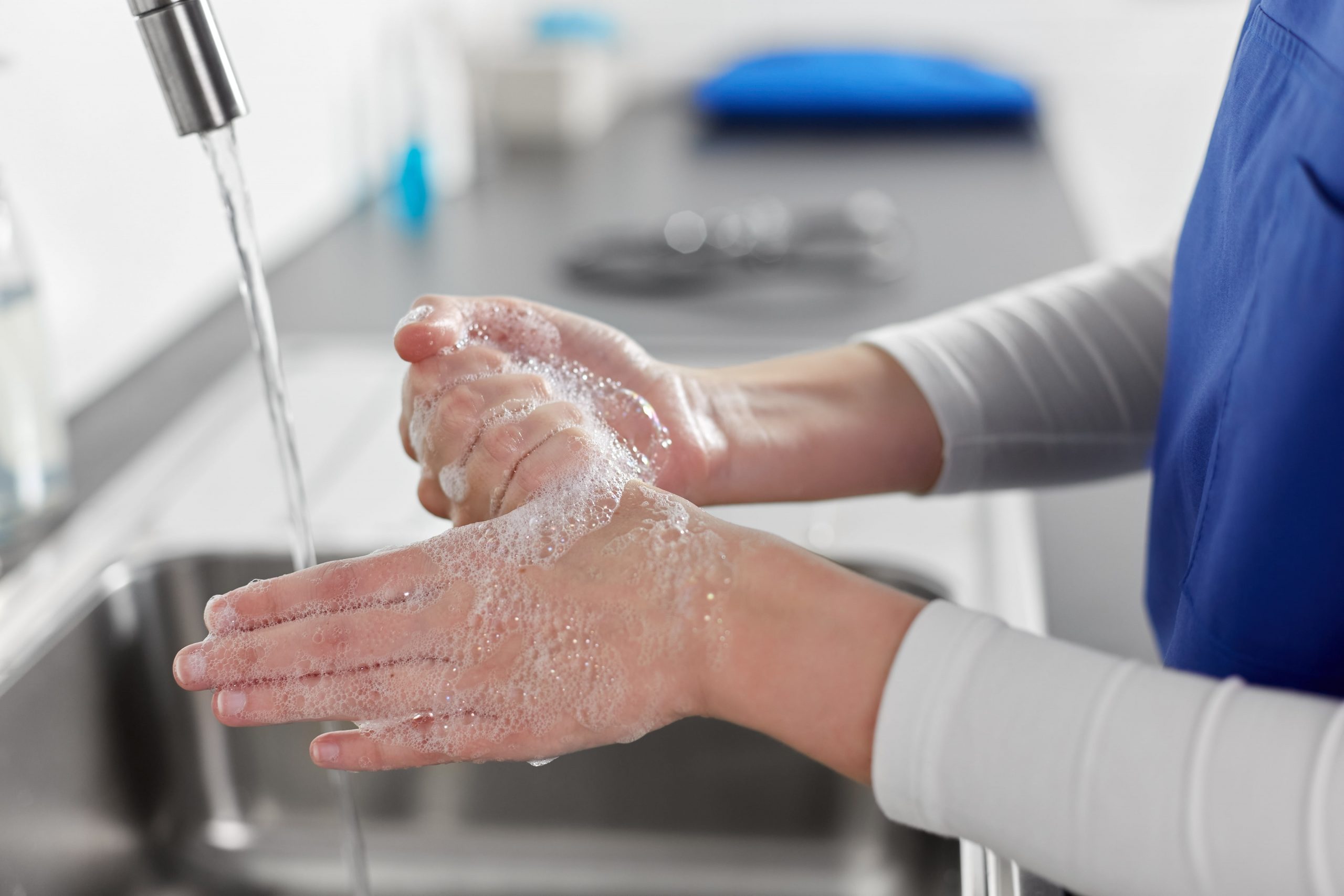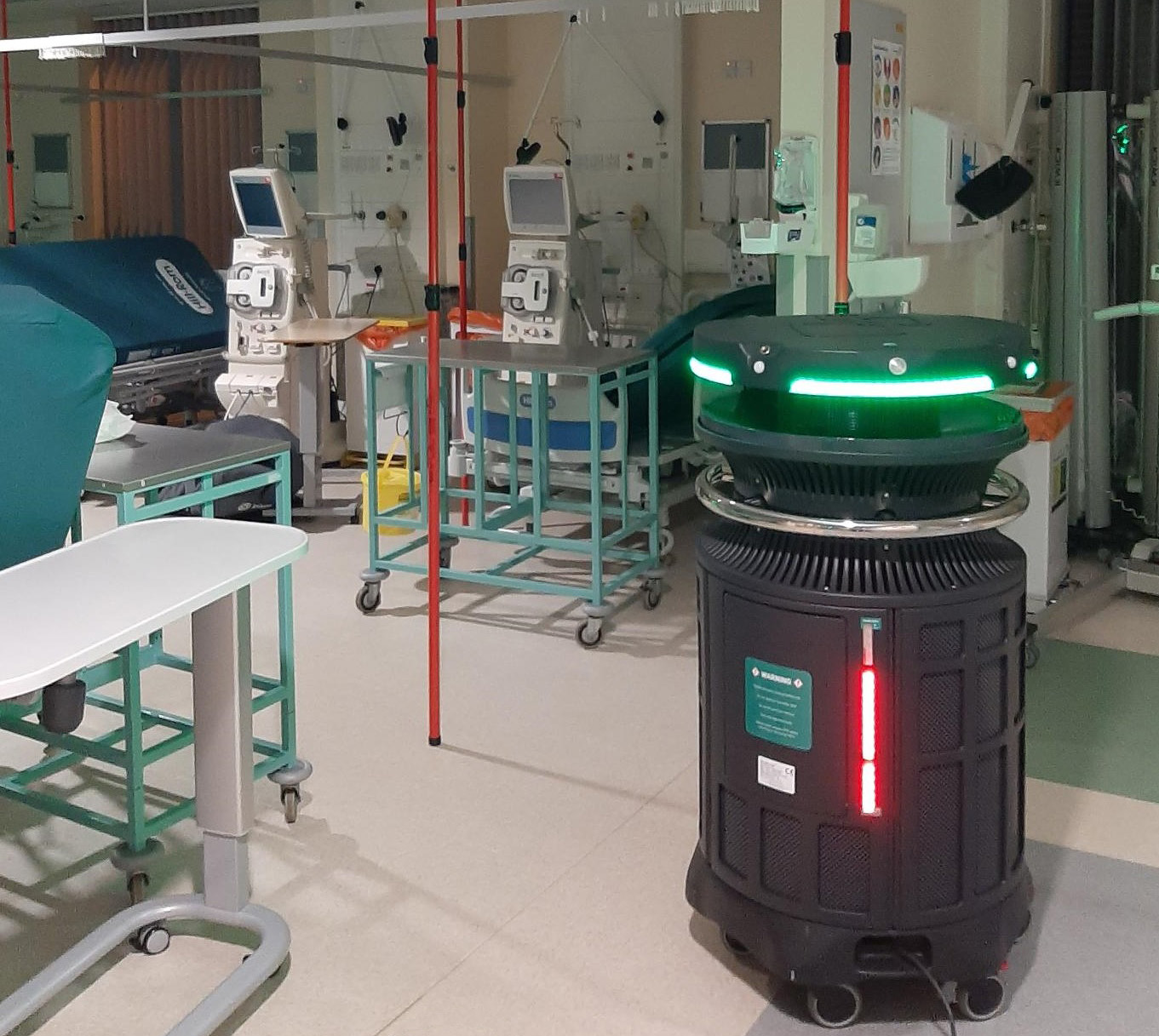
Clostridioides.difficile (C.difficile) prevention
The global COVID-19 pandemic caused by SARS-CoV-2, created significant impact on the delivery of healthcare worldwide including the National Health Service. Rapid systemic change was needed across the breadth of NHS service to minimize virus transmission whilst maintaining safe service delivery. Infection Prevention & Control (IP&C) teams found themselves front and central in preventing cross infection in hospitals and for some, care homes too.
IP&C pre-pandemic was challenging, preventing cross-transmission of C.difficile, Norovirus, MRSA, Flu, and Gram-negative infections to name but a few. Add in surveillance, education, audit and high level reports, it is clear that these valuable teams were under significant pressure. All this of course was set (and still is) against a backdrop of major bed capacity issues.
Then COVID-19 entered our lives and presented the biggest challenge yet for IP&C teams worldwide. Yet, our pre-COVID challenges remain – C.difficile, MRSA, E. coli still continue to harm patients and now there’s a need to refocus our efforts on the preventative work IP&C teams across the globe were involved in before COVID-19. But how exactly can this be achieved and how can those day-to-day IP&C challenges be overcome?
COVID-19 will continue to dominate the NHS agenda but managing it alongside other major hospital-acquired infections is an essential outcome.
The first in a series of IP&C pieces, the experts at Inivos will focus on C.difficile prevention – a vital requirement as the NHS enters the winter months.
It is well documented that Board to Ward (and beyond!) engagement and ownership is crucial element of any infection control strategy. Lead infection control clinicians can undertake an assessment to establish whether IP&C is fully embedded in their organisation and will be a focus of discussion in a subsequent thought leadership article.
In the meantime how prepared is your organisation to face the expected IP&C pressures this winter?
A proactive strategy will keep patients safe and bed capacity operating at its optimum level, but a reactive strategy is also important in preparation for outbreaks and subsequent bed closures.
IP&C teams are familiar with the C.difficile bundle – and it is a sound framework in which to base a C.difficile strategy – so lets examine it in more detail.
Antibiotic consumption
A winter peak in the prescription of antibiotics is normal, although in recent years, with nationwide lockdowns in the UK especially, the scale of antibiotic prescribing has actually decreased by 17% during certain winter months. But with no lockdown in place (and no further ones to be implemented) it’s expected that this figure will rise again.
With higher levels of respiratory infections during winter, and more antibiotics being prescribed, hospitals can expect larger admissions of patients. A proactive strategy should be implemented in order to alleviate the strain of increased patient numbers taking antibiotics and reduce the likelihood of C.difficile infection.
Antibiotic consumption should be reviewed often, particularly within hospital and care home settings. This can effectively reduce the number of patients taking unnecessary antibiotics and therefore decrease their likelihood of developing a C.difficile infection.
If your Trust/Health Board is fortunate enough to employ antibiotic pharmacists, it’s likely that audit data will drive improvements in compliance. If this isn’t the case, C.difficile root cause analysis meetings will identify any compliance issues. Reviewing antibiotics that the patient was prescribed pre-hospital admission is also essential.
Hand Hygiene
The importance of hand hygiene has been at the forefront of both public awareness campaigns and internally with medical teams and hospital staff, due to the recent COVID-19 pandemic. Clearly, it is an intervention to prevent transmission of C.difficile and other pathogens which harm patients.
But the most effective way to remove C.difficile spores from the hands is soap and water, as opposed to alcohol hand sanitiser. Ensuring this message is constantly and consistently communicated with healthcare teams and volunteers is essential in minimising the spread.
With multiple agency workers in hospitals and care homes, this message can often become diluted, which is why regular communication and messaging throughout the hospital or healthcare unit is the most effective way to manage hand hygiene.

Good hand hygiene should also be encouraged at patient level. Pre-winter and on-going winter campaigns can promote hand hygiene effectively, to both staff and patients.
Your communications team will play a key role in delivering this message using the Trust/Health Boards Intranet. Some organisations have used screensavers on PCs to promote this important message.
Regular hand hygiene audits can also contribute to an effective hand hygiene strategy – but only if they produce accurate data with a level of quality. For example, an audit of 5 hand hygiene opportunities is unlikely to give any meaningful data which can be acted on. It’s also important that the IP&C team undertake periodic validation audits. Quality data will drive meaningful hand hygiene improvements.
Rapid isolation & PPE
If a patient has unexplained diarrhoea, rapid isolation and other precautions, such as personal protective equipment, are essential. The time in which these precautions are implemented differs from hospital to hospital, but once a patient is suspected to have potentially infectious diarrhoea, they should be moved to a single room with their own toilet or at least commode facilities. Rapid isolation will minimise the risk of the environment being contaminated with spores in a multi-occupied ward area.
Initiating a maximum target isolation time such as, 2 hours for example, can keep healthcare workers focused. Yes, isolation rooms are at a premium but an assessment each day to identify which patients can be moved out of these valuable rooms, will put nursing teams on the front foot as far as this important intervention is concerned.
With limited bed numbers, moving patients to their own rooms isn’t always the easiest solution. Managing the patient away from others, with clear markers to other patients and healthcare workers to stay clear of the area, or using precautions with PPE, can be another option.
Remaining in isolation is also key. Monitoring the patient’s bowel movements and ensuring they haven’t had a diarrhoea episode for at least 48 hours alleviates the chance that they will encounter another episode in a multi-occupied bay/ward, increasing the risk of spreading the infection.
Similar to the consistent and constant hand hygiene messaging, the same should apply for PPE. PPE is only effective when used correctly and regular reminders of how to put gloves on and dispose of used PPE can be extremely effective in minimising the spread of C.difficile.
Effective decontamination of patient equipment and environmental surfaces
Effective decontamination is a key infection control measure in the prevention of C.difficile. Wards and departments must implement cleaning rotas, monitored by IP&C teams – but sometimes even this isn’t enough. High-pressure environments, low staff numbers, and increased numbers of patients during the winter months can lead to shortcuts and a lapse in proper cleaning methods – putting both patients and healthcare workers at risk.
A robust decontamination strategy, utilising sporicidals and hydrogen peroxide, has been clinically proven to reduce rates of HCAI C.difficile and will mitigate the human factors associated with healthcare worker cleaning standards.
Hydrogen peroxide vapour has the ability to reduce environmental pathogens and, when paired with powerful decontamination technology, can provide reliable and comprehensive surface decontamination.
IP&C leaders can introduce a HPV strategy to their executive teams, supported by Inivos:
- A deep clean and HPV decontamination of single rooms vacated by patients with C.difficile
- A deep clean and HPV decontamination of bays & whole wards affected by C.difficile outbreaks
A gold standard is to implement the whole ward decant HPV decontaminations. Rates of C.difficile can dramatically reduce through proactive cleaning of whole wards over the summer months and into autumn. Although empty wards are few and far between there are solutions available through the use of modular wards which can be quickly erected on health care premises. Yes, costly – but so is the cost to the patient and the NHS. Clearly a summer programme of full ward decant cleans needs Board approval – but a concise case to the Executive Team will prove invaluable if agreed. Experts at Inivos can help with a business case – just ask!

Terminal cleaning of mattresses
Although, of course, all areas of the ward and patient’s room should be cleaned, appropriate consideration should be given to mattresses, which can often be overlooked in C.difficile outbreaks. This is hugely important! Regular auditing of mattresses, both old and new, can ensure the integrity of the mattress is maintained.
Education
C.difficile prevention education has become challenging to deliver since the emergence of COVID-19. IP&C teams across the UK and beyond have had to think outside of the box since the start of the pandemic, delivering online sessions on all aspects of IP&C. But face-to-face education, where healthcare workers have the opportunity to really lay bare their IP&C challenges at ground level, is essential for ensuring C.difficile is effectively prevented.
If your healthcare facility is able to, reintroduce in-person IP&C education, particularly on C.difficile and the increase we expect to see during the winter months.
Lasting thoughts
As we head into winter with the added challenge of COVID-19, a C.difficile prevention strategy will keep patients safe and protect precious bed capacity. Doubling down on the C.difficile bundle will refocus minds but an effective decontamination and cleaning solution from Inivos, which removes the spores (and other pathogens!) from the environment, will minimise the risk of transmission considerably.




